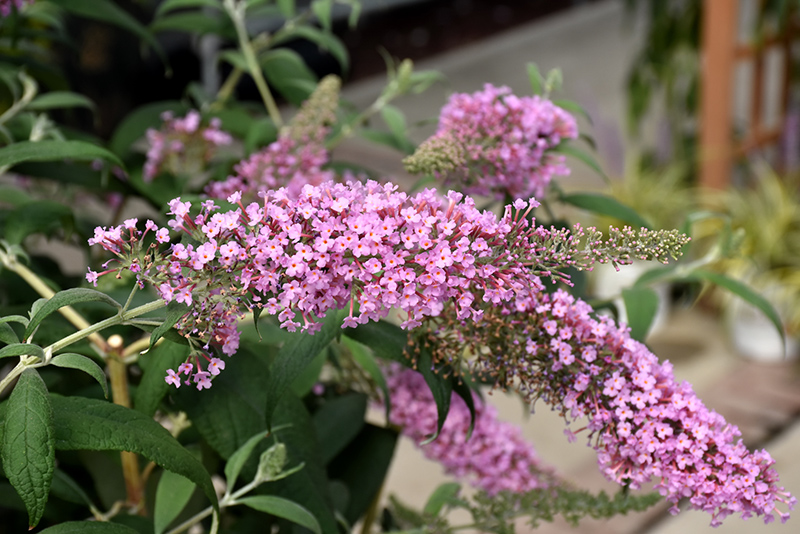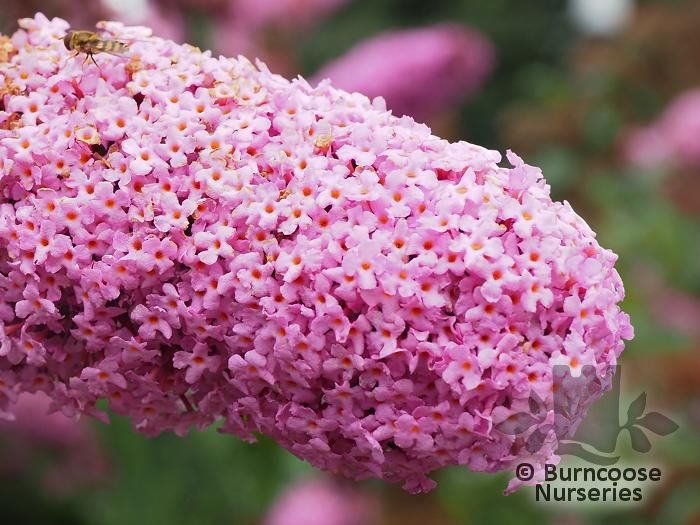The buddleia pink delight butterfly bush, scientifically known as Buddleja davidii ‘Pink Delight’, is a gorgeous flowering shrub beloved by gardeners, pollinators, and butterflies alike. With its long panicles of bright pink blooms and sweet honey fragrance, it’s easy to see why this plant has become so popular. In this article, we’ll explore everything you need to know about growing and caring for the Pink Delight butterfly bush in your own garden.
Overview of the Pink Delight Butterfly Bush
Native to China and Japan, the butterfly bush was introduced to Western gardens in the late 1800s. Since then, many cultivars have been developed with different flower colors, growth habits, and other characteristics. Pink Delight is one of the most stunning with its rich pink blooms that emerge in spring and continue flowering all summer long.
Here are some key facts about this variety
- Botanical Name: Buddleja davidii ‘Pink Delight’
- Plant Type: Deciduous shrub
- Mature Size: 6-8 feet tall x 4-6 feet wide
- Flower Color: Vibrant pink
- Bloom Time: Spring to fall
- Hardiness: Zones 5-9
- Exposure: Full sun
- Soil: Well-draining, average fertility
- Water: Low to moderate once established
With its compact, vase-shaped form and incredible flower production, it’s easy to see why Pink Delight has become a garden staple Its long blooming season also makes it a magnet for pollinators like bees, butterflies, and hummingbirds
Growing Conditions for Pink Delight Butterfly Bushes
Luckily, the Pink Delight butterfly bush is quite easy to grow. Here are the key conditions it requires:
Sun Exposure
- Thrives in full sun locations with at least 6 hours of direct sunlight per day. Morning sun is essential.
Soil
- Does best in well-draining soil with average fertility and organic matter. Avoid wet, poorly draining sites.
pH
- Prefers neutral to slightly acidic soil with a pH of 6.0-7.0. Can struggle in very alkaline conditions.
Water
-
Needs regular irrigation while establishing the first year. Afterward, can tolerate some drought once mature.
-
Avoid overwatering which can lead to root rot. Instead, water deeply only when the top few inches become dry.
Hardiness
- Rated for USDA zones 5-9. Will lose its leaves and go dormant in winter in colder climates, regrowing each spring.
Spacing
- Plant butterfly bushes 3-5 feet apart depending on the variety’s mature size. Give Pink Delight at least 4 feet spacing.
Overall, the Pink Delight butterfly bush is adaptable to most climates and soil types. Just provide plenty of sun, good drainage, and occasional irrigation for best results.
How to Plant and Care for Pink Delight Butterfly Bushes
Caring for the Pink Delight butterfly bush is quite simple thanks to its low maintenance nature. Follow these tips for success:
Planting
-
Plant in spring once the threat of frost has passed. Container-grown plants can be planted anytime during the growing season.
-
Dig a hole 2-3 times as wide as the root ball and equal depth. Set the plant in place and backfill with native soil, watering well after planting.
Watering
-
Water deeply 2-3 times per week while establishing for the first season. Mature plants only need infrequent, deep soakings during drought.
-
Take care not to overwater as wet soil can lead to root rot. Allow the soil to partially dry out between waterings.
Fertilizing
- Apply a balanced fertilizer or compost in early spring to support the season’s growth. Organic options like compost tea also work well.
Pruning
-
Prune butterfly bushes in late winter or early spring before new growth emerges. Remove any dead or damaged stems and shape as desired.
-
Can be pruned periodically during summer to encourage more blooms. Avoid fall pruning.
Overwintering
-
In zones 5-6, butterfly bushes will die back after a hard freeze. Cut stems down to 6 inches above the ground after they brown.
-
Apply mulch over the base for insulation. Plants will re-sprout the following spring.
Common Pests and Diseases
The Pink Delight butterfly bush is rarely bothered by pests or disease. Issues to watch for include:
-
Aphids – Small sucking insects that cluster on stems and leaves. Blast off with water or use insecticidal soap.
-
Scale – Hard shelled insects that attach to stems. Prune out infested areas.
-
Powdery Mildew – White fungal coating on leaves. Improve air circulation and remove affected growth.
-
Root Rot – Caused by overwatering. Allow soil to dry between waterings and improve drainage.
-
Winter Desiccation – Browning of stems due to winter cold and wind. Mulch the base for protection.
Outside of these minor problems, the Pink Delight butterfly bush is relatively carefree and trouble-free in most environments. Proper site selection and care will prevent most issues.
How to Use Pink Delight Butterfly Bush in the Garden
Thanks to its long bloom season and incredible flower production, the Pink Delight butterfly bush shines in many garden applications. Here are some of the best ways to utilize it:
-
Flower Borders and Beds – Plant en masse along borders or in mixed beds and flower gardens. Allows its vibrant pink blooms to stand out.
-
Pollinator Gardens – Butterflies, bees, and hummingbirds cannot resist butterfly bush flowers. Include it in any pollinator-friendly garden.
-
Cut Flowers – The long panicles make excellent cut flowers. Cut stems in the morning for arrangements.
-
Containers – Plant one in a large pot or urn for a beautiful patio specimen. Keep soil consistently moist.
-
Hedges and Screens – Plant in a row to create an informal, flowering hedge or living screen. Prune annually to shape.
-
Wildlife Gardens – The nectar-rich flowers attract not just pollinators but insect-eating birds too.
Let those bright pink blooms shine in borders, beds, containers, and more!
Popular Varieties of Butterfly Bush
While Pink Delight is arguably one of the most popular butterfly bush varieties, there are many others to choose from too. Some top alternatives include:
-
‘Miss Molly’ – Vibrant red flowers on a compact shrub.
-
‘Miss Ruby’ – Eye-catching deep pink-red blooms.
-
‘Pink Micro Chip’ – Profuse pink flowers on a petite 2 foot shrub.
-
‘Blue Chip’ – Light blue flowers on a dwarf variety.
-
‘Lo & Behold ‘Blue Chip Jr.’ – Lavender-blue blooms on an extra compact 18 inch shrub.
-
‘Sungold’ – Cheerful golden yellow panicles.
There are also white, magenta, purple and multi-colored varieties to suit any landscape!
FAQs about Pink Delight Butterfly Bushes
Here are some commonly asked questions about growing and caring for Pink Delight butterfly bushes:
Q: How fast does Pink Delight butterfly bush grow?
A: It’s a moderately fast growing variety, reaching its full 6-8 feet tall x 4-6 feet wide size within 3 years after planting. Pruning and adequate sunlight can help accelerate growth.
Q: Does it require much maintenance?
A: No, Pink Delight is quite low maintenance compared to many flowering shrubs. Occasional pruning, watering, and fertilizing is all it needs to thrive.
Q: How long do the flowers last?
A: Each flower panicle remains in bloom for 2-3 weeks. However, the plant will continue producing new flower clusters all season long, resulting in a bloom period from spring until fall.
Q: Should I deadhead spent blooms?
A: Deadheading is recommended to encourage more flower production. It also helps reduce unwanted seedling spread.
Q: Is Pink Delight deer resistant?
A: Yes, butterfly bushes are generally avoided by deer and other browsing animals thanks to their unappealing foliage. This makes them great choices for gardens prone to deer damage.
Conclusion
With its long season of vibrant pink blooms and heavenly fragrance, it’s easy to see why the Pink Delight butterfly bush has become a must-have for gardens across many climate zones. As a bonus, it attracts pollinators galore, requires minimal care, and offers unmatched flower power from spring through fall. Give this beautiful, butterfly-friendly shrub a try in your outdoor space this season!

Information, Help & Advice







